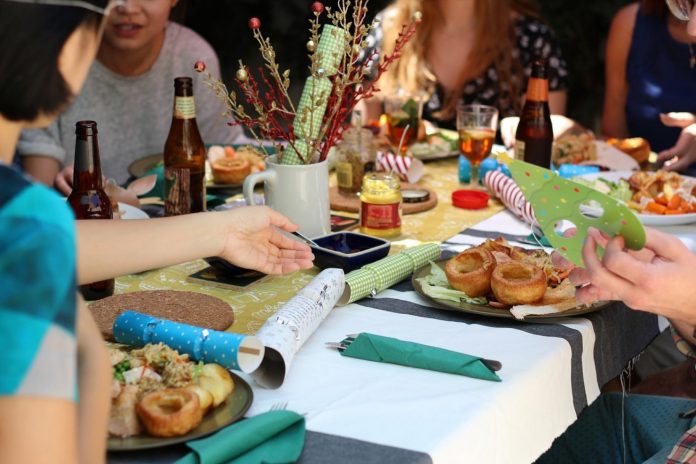This article is written by Shashwat Kaushik, a student of CCS University. This article gives an analysis of whether a food recipe can be patented or not.
Table of Contents
Introduction
As a rule, the common formula for a “Margarita” or “the best grill sauce ever” will not be patentable because they will not be adequately remarkable, normally falling flat on the non-obviousness prerequisite. The best way to know without a doubt is to see how the Patent Office arrives at its decisions identifying what can and cannot be protected. It is positively conceivable to acquire a patent on a formula or food thing if there is an exceptional perspective or a condition (like period of usability or newness) is being tended to. The ploy is to recognize a uniqueness that is not something one would normally think to attempt.
Patenting food recipes
Patent Class 426 takes into account the protection of food sources and plans. The language of this standard covers food sources and consumable materials. The law sees food as a piece of tissue, which is one of the classifications qualified for licenses. An innovator can make another synthesis that imaginatively changes the construction. As such, a culinary expert can demonstrate inventiveness by making a formula that nobody else has at any point made previously. It needs to meet similar models for licenses as whatever else.
It should not appear glaringly normal to an individual in the field, this implies a standard chef couldn’t take a gander at a similar organization of issue and make a similar food or formula without assistance. The guidelines for fulfilling the non-obvious standards are in 35 U.S.C. (United States Code) § 103. The appropriate legal dispute that tests this law is the Supreme Court’s 1966 decision on Graham v. John Deere (1966). The requirements are as follow:
- It should have creativity: One of the main necessities for creation is freshness. There’s a sound judgment component to the patent application measure. Anything recently created is ineligible for a patent. The equivalent is valid for food sources and plans. The new creation should have recognizing highlights that demonstrate nobody has at any point made it previously. In the field of food, this is something extreme to demonstrate. The most delectable pizza on the planet probably has a large number of similar fixings and cooking ventures as different pizzas. The patent candidate should show exhaustively what makes the new, more delightful pizza unique from all the others that preceded it.
- It should have utility: A development should have esteem. A creation with no object is futile according to the USPTO (United States Patent and Trademark Offices). This issue is not hard to demonstrate for a food patent case. Any food that people can eat securely has a specific degree of significant worth. A few plans will have more worth than others, yet the overall principle is that all new food varieties and plans ought to fulfill the utility necessity.
- Complete honesty is required: An extra advance for food manifestations is to tell the best way to make the item. The creator should give a point-by-point clarification of the interaction. This depiction should train others such that anybody could mirror it without performing unnecessary experimentation. In certain circumstances, you might not have an advancement deserving of a utility patent. These are the licenses the vast majority consider when they plan to apply. A utility patent is difficult to get. A simpler choice for food licenses is the plan patent. This kind of advancement features the appearance of something. It goes on for just 14 years. Utility licenses keep going for a very long time.
You can procure a planned patent on an item that another person has a utility patent for. This is ideal for food varieties where you improve the look. For instance, Patent D762342 is for a cheesecake that has an inserted whirl.
Food licenses are significant for promoting reasons. You can portray your food creation as patent forthcoming. If you get a patent, you can advertise that in the promotions. You will sell to a greater degree an item that you portray as licensed. Clients may not know patent law, however they do realize that something that acquires a patent is noteworthy. Placing your patent honor in your advertisements will draw in more clients.
Recipes that can be patented
The USPTO has granted licenses to endless sorts of food and plans in the course of recent hundreds of years. The majority of them include enhancements to cycles and items. For instance, the innovator who broadened the timeframe of realistic usability of food varieties with added substances acquired a patent. The developments of mass cheddar creation and mass grain creation additionally acquired licenses. Anything that makes food sources last more or the assembling interaction simpler is deserving of a food patent.
Some different instances of food licenses
- Modifying shapes: The actual appearance of a recipe can procure a patent on certain occasions.
- Making mixes: The blend of flavors is something that an individual can patent in specific examples. For instance, the capacity of peanut butter and jam in a similar compartment acquired Patent US3117871.
- Improving flavor: This sort of advancement is significant. It is difficult to demonstrate, however. Taste and flavor are not things that everybody concurs on.
- Improving surfaces: Some hitters and batters cook contrastingly rely upon the fixings. You can get a food patent for any interaction that trades fixings to make the food more delectable or simpler to make or to give it a superior surface.
- Expanding timeframe of realistic usability: Extending the capacity term of an item to keep it new longer is a significant development.
- Making food sources better: Reducing the calorie completion of food or making something vegetarian falls into this classification.
- Making food varieties simpler to cook: Making something conceivable to cook in a microwave or whatever other development that paces up the cooking cycle.
The essential principles of licenses apply to every one of the classifications above. An individual should demonstrate utility and originality. One additionally should apply to patent instantly before someone else does.
What’s a good way to apply for a food patent
The best methodology is to consider the recipe in the manner that the USPTO will. Since Patent Class 426 assesses claims as far as the arrangement of issue or the interaction for making the item, you ought to also.
This patent application is not like writing recipes. General rules like utilizing an iron skillet and blending at regular intervals are not valuable. You need to depict your food or formula at the molecular level. You’re presently depicting the actual synthesis of the fixings. It’s a much simpler approach to demonstrate novelty and creativity. You can utilize science to help the case. You likewise need to keep contenders from taking your thought after it’s protected. While you should add points of interest for the cycle, portray the cooking ventures as extensively as could be expected.
A formula that requires a preheated broiler at 375 degrees sounds valuable. Shockingly, another person can attempt to patent an alternate formula by utilizing a temperature of 400 degrees alongside a couple of other marginally various advances. At the molecular level, a smart candidate can draw a sufficient differentiation to win a patent. The USPTO recommends that individuals utilize the EFS-Web framework to apply for food licenses. You will round out all the paperwork and add delineations through the online framework. You will likewise pay $400 more for the application charge on the off chance that you don’t record on the web.
Innovators can broaden the clock on ensuring a thought for a food patent. You can document a temporary patent application. This progression will give you legitimate assurance for a year from the application date. You can utilize this chance to test and improve your thought.
At the point when the year is going to lapse, you can record a non-temporary patent application. It’s an extraordinary method to give yourself additional time in case you’re certain your food thought is sufficient.
What are the best ways to earn a food patent?
The best ways to deal with procuring a food patent are:
- Track down a “sweet spot” in the assembling cycle: The point here is to track down another condition in the assembling interaction or item that you can develop. This is the “sweet detect” that can build your chances of getting a patent.
- Another utilization for a known item or cycle: The objective is to discover optional purposes for setting up items. For instance, on the off chance that you make a formula that you can demonstrate fixes migraines, you’ve added therapeutic properties. Your advancement has worth, and you merit a patent.
- Cooperative energy: At times, the mix of inconsequential fixings can have stunning outcomes. If placing a banana in a soup made another food furor, that advancement would have cooperative energy and be deserving of a patent.
- Making something nonsensical: The hardest piece of winning a food patent is demonstrating that no one else could think about the thought. A powerful method to finish this assessment is to accomplish something odd and unforeseen. That way, you’re naturally making something that nobody else at any point would.
Here are a few instances of bizarre developments that acquired food licenses:
- Fat and egg yolk substitute: Fats and eggs are tasty. They’re likewise swelling and undesirable. A creator figured out how to trade out the unhealthy parts of the ingredients without forfeiting flavor. It appeared to be inconceivable. That is the reason it procured a patent.
- The frozen batter that prefers better: When somebody freezes the mixture, it makes an issue. The defrosting interaction leaves an odd taste. An individual figured out how to freeze batter such that it tasted similar when unthawed. It likewise abbreviated the cooking time and gave the cook a greater amount of the item in the wake of unthawing. This thought had a great deal of utility.
- Jam and peanut butter food cut: An individual concocted another approach for making peanut butter and jam. The steps included two layers of jam for explicit format and layout and proportion. This plan left an opening where an individual could embed the peanut butter. It changed the flavor profile marginally since the eater got an unexpected nibble in comparison to anticipated. It likewise had another cycle and design, a valid justification for a food patent.
- Sealed crustless sandwich: This is another sort of peanut butter and jam food patent. The innovator sealed the external outside layer of the sandwich. The bread didn’t get saturated if it sat excessively long. That made the flavor last more. It likewise put away better compared to a normal peanut butter and jam sandwich. These are significant qualities deserving of a food patent.
Conclusion
Food items can be patented but they must have a key feature that distinguishes them from the other recipes like, a different way of baking or adding a medicinal composition in the recipe. In this way, it can be patented, and it is not necessary that the cooking method should be different, patents could also be based on appearance, shelf life, texture flavor, or any other key feature that differentiates your recipe.
References
- Food Patents: Everything You Need to Know (upcounsel.com)
- Copyright Protection in Recipes – Copyrightlaws.com: Copyright courses and education in plain English
- https://www.uspto.gov/learning-and-resources/newsletter/inventors-eye/can-recipes-be-patented
- https://www.business.com/articles/can-you-patent-a-recipe/
- https://www.uspto.gov/learning-and-resources/newsletter/inventors-eye/can-recipes-be-patented
LawSikho has created a telegram group for exchanging legal knowledge, referrals, and various opportunities. You can click on this link and join:
 Serato DJ Crack 2025Serato DJ PRO Crack
Serato DJ Crack 2025Serato DJ PRO Crack











 Allow notifications
Allow notifications



